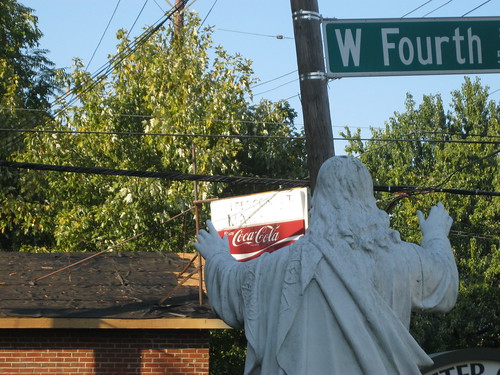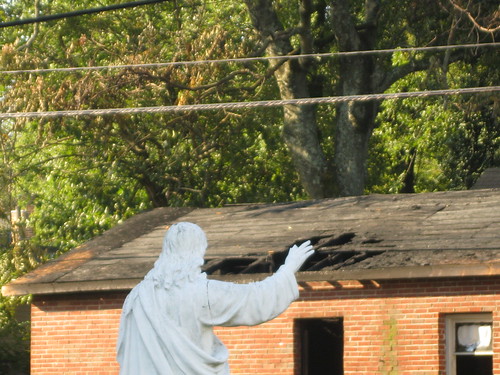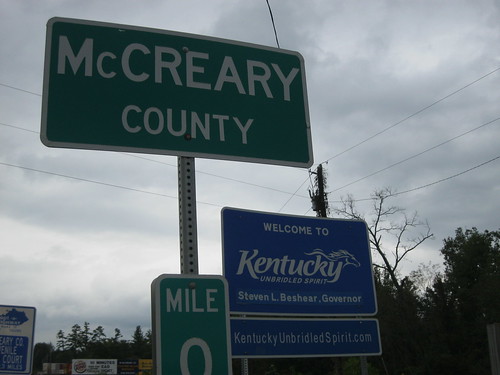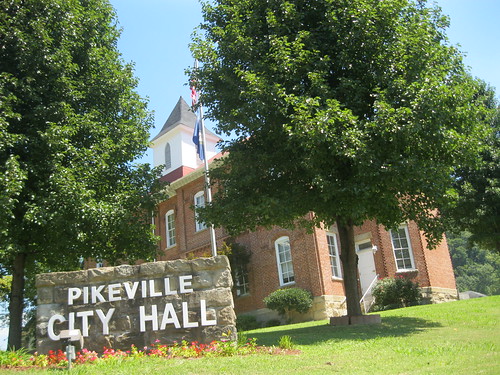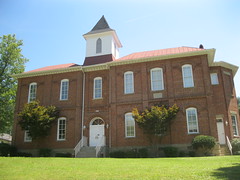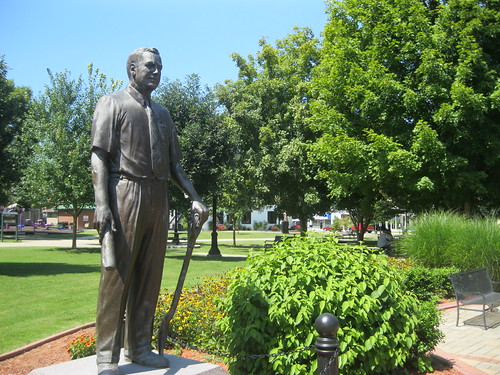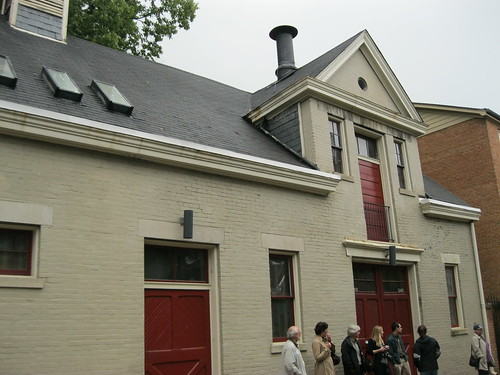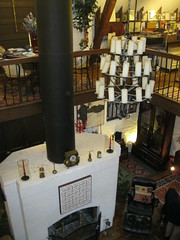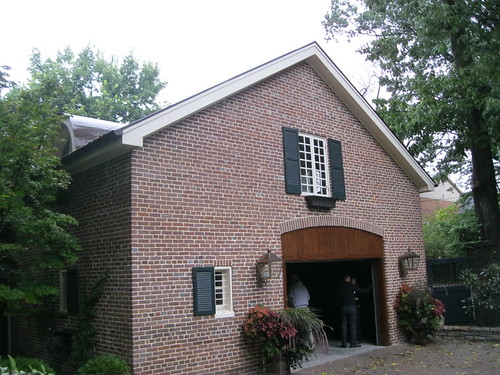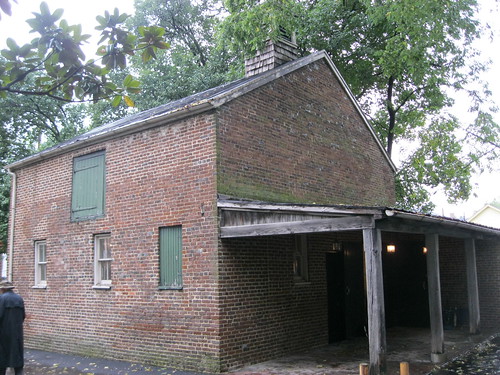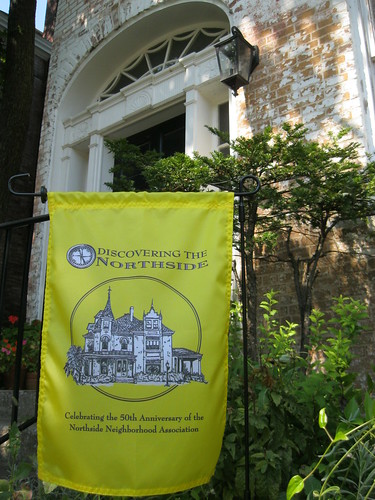 |
| 263 North Broadway – Lexington, Ky. |
Last week on one of my walking lunches, I couldn’t help but notice a few brightly colored flags in front of several houses in the area around Third Street just west of Broadway. It was not until Friday that I discovered that the flags marked sites on the Northside Neighborhood Association walking tour in celebration of the 50th anniversary of the association. Of course, the neighborhood and its homes have existed for a much longer period.
When Lexington was originally platted, the area was divided into five acre lots. But by the 1810s, Lexington was beginning to grow northward toward what is now Transylvania University. In 1830, Transylvania University relocated its campus across Third Street to its present location and Lexington continued to grow in her direction. The Northside Neighborhood is expansive – reaching from Newtown Pike to Limestone and from Church Street to north of Seventh. Because of its geographic diversity, Northside also includes a broad variety of socioeconomic classes, architectural styles and historical communities within its bounds.
Prior to the Civil War, African American enclaves grew along College, Henry, and Miller Streets, but blacks (both freed and slave) generally lived dispersed among their white neighbors. After the War, African American urban clusters such as Brucetown, Goodloetown and Taylortown arose as Lexington became more segregated. A black Catholic parish, St. Peter Claver, opened in 1887 to serve these communities and remains a vibrant parish today at Fourth and Jefferson.
In the 1880s and 1890s, many of the old large five acre tracts were opened up to speculation, construction, and a growing population. In turn-of-the-century Fayette and Elsmere Parks, lumber companies built quality homes with architectural detail but without the without a commissioned architect. These were truly some of Lexington’s first “suburbs.”
It has been noted that both the black urban clusters and the predominately white suburbs were both developed off of the major roadways, yet the former occupied the valleys between the more-elevated suburb.
Interspersed among the homes were various commercial enterprises, be it groceries, restaurants, tailors or saloons and many of the old storefronts remain. And infill continued so that the Neighborhood contains examples not only of Federal and Victorian architecture, but also contains homes in the bungalow and arts and crafts style. Today, Miller Street is being redeveloped with townhouses and some quasi-modern architecture. I never have really considered the size and scope of Northside because it contains so much; I have hardly scratched the surface. I guess I know where I’ll be walking…
Sources: National Register (Listing and Expansion); Hat/Tip: Herald-Leader.
